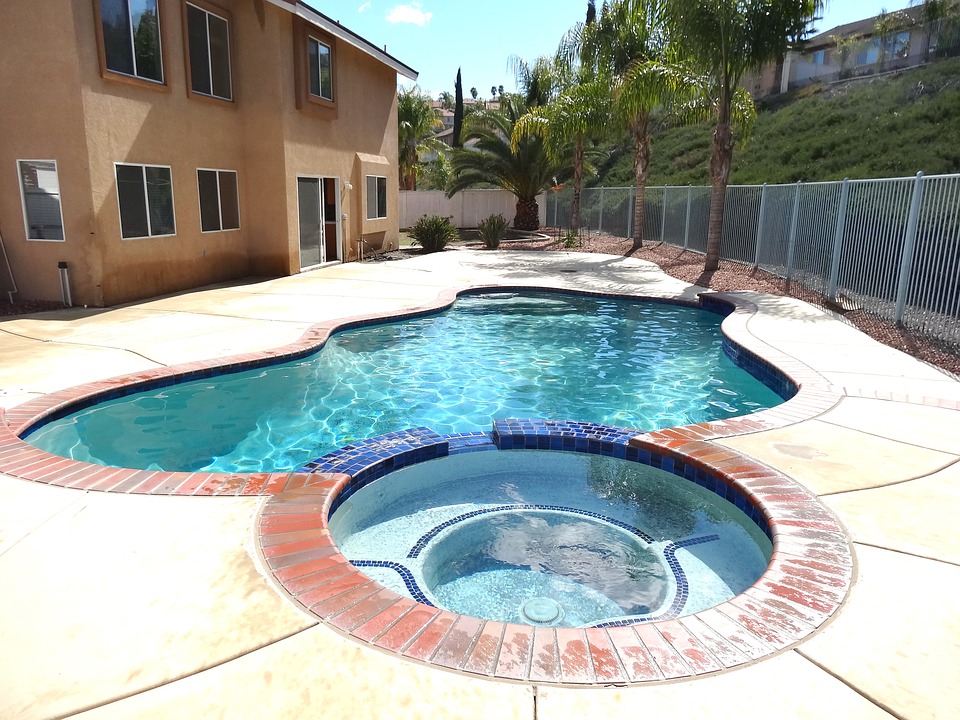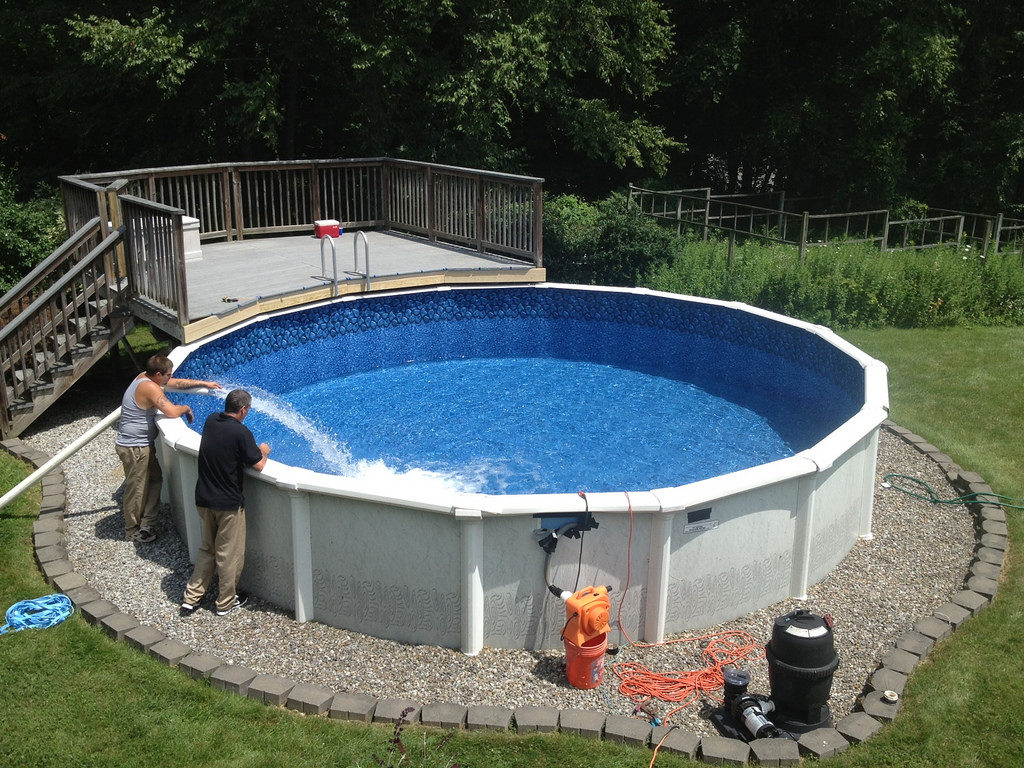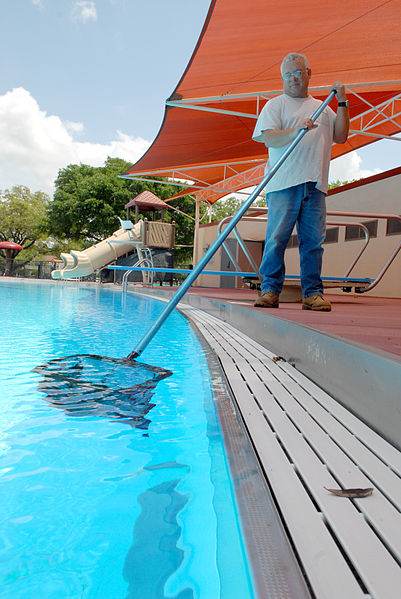Trying to decide which type of swimming pool is best for your situation? If so, this inground vs above ground pools comparison is perfect for you
Chances are, if you’re reading this article, you’re probably thinking about buying a pool. Or, you might just want to compare the two pool types to gain a better understanding. Whatever your reasons, this post will walk you through everything you need to know.
You’ll learn about the differences between each pool’s lifespan, cost, and maintenance, in addition to the advantages and disadvantages that come with each.
Inground vs Above Ground Pools



What is an inground pool?
Inground pools are installed below ground level, and come in three major forms: concrete, fiberglass, and vinyl. But once an inground pool is installed, it’s pretty much there for the long. Hence why these pools are typically favored by homeowners living in warmer climates.
In addition to providing a convenient source of recreation and wellness, inground pools also add aesthetic and monetary value to a home. So they don’t only look great, but also increase the value of your home as well.
Of course, that’s dependent on which type of inground pool you choose to install. You can read about the different types of inground pools here: Fiberglass vs Vinyl vs Concrete Swimming Pools
With that said, inground pools are known for having long lifespans — some can even last “forever” with proper maintenance. But by that, we mean the repairs and renovations that’ll naturally be demanded as the pool ages.



What is an above ground pool?
Above ground pools are the non-permanent solution to swimming at home. They can be set up in most back yards within a few weeks or less, with the option for moveability if needed. These pools are often seen in more diverse climates, where warm weather only lasts a few months throughout the year.
With that said, above ground pools are less than half the price of the cheapest inground pools. They’re also easier to maintain and install. But naturally, there are some limitations that come with owning one, like the size and value retention.
Inground vs Above Ground Pools: Types of pools
Types of Inground pools
Concrete
Concrete pools are the only pool-type that offer full customization. From size to shape, pool owners can design every nook, curve, and waterfall they can imagine. And this is because concrete pools are completely made from scratch, so to speak.
Pool builders come in and dig the hole, create the structure, lay down the concrete, and so forth.
The main takeaway here is that with concrete pools, the possibilities are pretty much endless. Of course, that’s assuming you’re ready to dish out the funds needed, as concrete pools are the most expensive pool type to install. And naturally, the more complex the design, the longer the installation period.
On the plus size, they hold their value pretty darn well.
Vinyl
The word “vinyl pool” refers to an inground swimming pool that uses a vinyl liner. The liner stretches entirely across the inner surface of the pool, much like wallpaper.
Of the three types, vinyl pools are usually the cheapest to install. But, the main drawback is that the liners need to be replaced a few times within the pool’s lifespan.
But one of their winning features, like concrete pools, is their customizability. Pools owners have plenty of options to choose from, whether it’s the classic rectangular and circular shapes, or fully custom designs.
To summarize, consider vinyl pools the slightly less permanent alternative to concrete or gunite pools.
Fiberglass
These pools continue to grow in popularity for one major reason: simplicity.
Fiberglass pools are the only pool-type that comes pre-built, shipped to your home for installation. And that’s because they’re made from a mold. So when it’s time for installation, the team digs the hole, sets up the plumbing, and drops the pool in.
No shaping, layering, or structuring required.
A few notable advantages are their high durability and immunity problems like cracked walls or torn liners. Bottom line, it’s tough to damage a fiberglass pool.
But, since these pools are factory made, size and shapes are limited.
Types of Above Ground Pools
Above ground pools are built from a range of materials, including vinyl, metal, and aluminum. Some brands also apply a special resin layer to the innermost wall of the pool — a newer design trend that helps prolong the life of the pool.
As far as size and shape are concerned, the classic circle and rectangle designs are pretty much it. Not a whole lot to choose from in the shapes department.
On the other hand, what surprises most people is the fact that above ground pools allow for nearly the same amount of length and width as most inground pools do. Of course, with above ground pools, you’re limited to a uniform depth across the pool.
Inground vs Above Ground Pools: Lifespan
How many years does an inground pool last?
An inground pool’s lifespan is usually at least 50 years or so, but again, that number can easily be doubled with good maintenance and repair habits. And as mentioned earlier, the build material affects the initial lifespan of the pool.
How many years does an above ground pool last?
Usually, above ground pools have a shorter lifespan, with most pools lasting 10-25 years. But some pools can last longer depending on build quality and how well the pool is maintained.
Inground vs Above Ground Pools: Maintenance



Inground Pools
Regardless of which type of inground pool you decide on, the general maintenance needed will be the same. From skimming and vacuuming to balancing the water and maintaining the equipment. You’ll still have to do all those little chores you know and love — but they can be much easier with a pool care schedule.
Although it should be noted that the build material of the pool affects the level of maintenance required. Concrete pools are typically higher maintenance due to their permeability and tendency to absorb chemicals.
Fiberglass pools, on the other hand, are fairly low maintenance since they’re naturally non-porous.
Above Ground
Pool maintenance isn’t really all that different for above ground pools. In fact, it’s usually easier since above ground pools are often small and require less complex pool equipment.
Expect to still vacuum, run the filter, balance the water, and all that good stuff. Just not as often as you would with an inground pool.
Inground Pools vs Above Ground Pools: Cost
How much does it cost to put in an inground pool?
The cost of inground pools ranges from $25,000 – $75,000. Each pool installation will be different, but the most important factors to be mindful of are build material, decking, and additional equipment installations.
How much does it cost to put in an above ground pool?
It’s much, much cheaper than an inground pool. How much cheaper?
Well, the simpler ones you can buy at most big box stores start at around $500, but pricing for higher quality pools is a little different.
Having an above ground pool professionally installed ranges from $4,000-$10,000, with build material and size being major factors.
Heating the water
Regardless of which type of pool you decide on, you probably want to swim comfortably in heated water. But maybe you haven’t figured out how to heat it just yet. No problem, here 7 cheap ways to heat your swimming pool.
Inground vs Above Ground Pools: Advantages and Disadvantages
Inground Pool Advantages and Disadvantages
Advantages
+Unlimited design options (concrete pools)
+Long lifespans (50-100+ years)
+Increase the value of your home
Disadvantages
–Expensive to install ($25,000 – $75,000)
–Long term costs: require renovation and repairs over time (concrete, vinyl)
–More energy use and maintenance required
Above Ground Pools Advantages and Disadvantages
Advantages
+Can be moved if necessary
+Costs much less than inground pools
+Lower maintenance and energy use
Disadvantages
–Shorter lifespans (10-25 years)
–Limited customization options (size, shape, decor)
–Doesn’t increase value of a home
Inground vs Above Ground Pools: Closing thoughts
Hopefully, this comparison has helped you determine which type of swimming pool is right for your home. If you live in a warmer climate, swim often, and want to increase the value of your home, an inground pool is a great investment. But if you live in a more diverse climate, only plan on swim a few months throughout the year, and have a smaller budget, above ground pools are a great choice.
On that note, once you have your pool, you’ll want to read these energy saving tips to get off to a get start. From there, master these pool care tips to make maintenance way easier for yourself going forward.
Still not ready to make a decision? This might help: 30 Reasons To Get a Swimming Pool



Really amazing guide. Very valuable content. Thank you very much for sharing..
Thanks for your comment, Joseph! Glad to hear the information was helpful to you
I truly appreciate this article.Much thanks again.
No problem, Chance. Glad it was helpful!